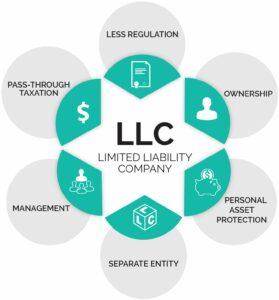In early 2015, I wrote about SAFE instruments, which I then had heard about but not yet seen in my practice, with a gently mocking but grudgingly intrigued tone, which likely resulted from the trend having originated on the West Coast. (As a native New Yorker, I have been trained to roll my eyes at each new development from California and then promptly forget about that when I incorporate it into my life.) With over three years of experience with SAFEs in my practice, I thought it appropriate to update my post, less the cynicism, since they have become pretty common and accepted in the world of early stage corporate finance.

A SAFE instrument (Simple Agreement for Future Equity) is an alternative to convertible notes for startups seeking bridge financing to keep the lights on until they can raise substantial funds in a true equity round. Y Combinator offers open source SAFE equity forms with some background information. With a convertible note, the seed investor acts temporarily as a lender, with the note being converted to equity if and when the company completes a qualifying equity financing. With SAFE equity, the investor simply receives the right to receive preferred equity when the qualified financing is completed, without the need to temporarily treat it as a loan. There is no interest, maturity date, repayment terms or any other provisions that you’d associate with a debt instrument.
SAFE promoters correctly point out that these seed investors are not ultimately seeking a debt-like steady return on their investment. As early-stage equity investors, they have more of a high risk/high reward orientation. Convertible notes are usually not repaid in cash. The more likely scenarios are that (1) they are converted into equity, or (2) the company fails to complete a financing and realistically is not able to pay back the note. In the first scenario, the accrued interest adds to the amount of shares issued upon conversion, giving the investors a windfall that they would not have expected by making a simple equity investment. With SAFEs, the investment is treated like an equity instrument, which reflects the intent of both parties.
The SAFE folks also tout the relative simplicity of the SAFE documentation. There is only one five-page document to be executed, and there aren’t a lot of moving parts requiring much customization. Essentially, the parties need to only agree on whether there is a cap on the valuation of the later financing for purposes of determining the number of shares to be issued to the investor, and whether the investor receives a discount on the conversion price when the later financing is completed. In fairness, convertible notes are themselves fairly simple and are used because they are themselves much simpler than VC equity documents, but SAFE equity appropriately combines simplicity with avoiding introducing debt concepts where not intended.
Finally, the absence of a maturity date with SAFEs takes the time pressure off of the company to complete the equity offering within a particular timeline, though investors may prefer having such a deadline in place to incentivize a quick completion of an offering.

 Carolyn Elefant, writing in Above the Law, takes to task those solo lawyers who, to use her phrase,
Carolyn Elefant, writing in Above the Law, takes to task those solo lawyers who, to use her phrase, 
 Jason Zweig, writing in the Wall Street Journal, discusses
Jason Zweig, writing in the Wall Street Journal, discusses  When I am assisting a client on a matter, and the help of a legal specialist is needed (tax, above all else, but many other areas as well), the client will often be reluctant to loop in the other attorneys and will urge me to handle it. While I’d like to think that this is a reflection of the client’s respect for my abilities, I’m sure it’s in part based on a fear that bringing on another attorney will drive up legal costs. I don’t think this is necessarily the case, and in any event, scrimping on getting the right advice can create substantive issues that cost far more in the long run.
When I am assisting a client on a matter, and the help of a legal specialist is needed (tax, above all else, but many other areas as well), the client will often be reluctant to loop in the other attorneys and will urge me to handle it. While I’d like to think that this is a reflection of the client’s respect for my abilities, I’m sure it’s in part based on a fear that bringing on another attorney will drive up legal costs. I don’t think this is necessarily the case, and in any event, scrimping on getting the right advice can create substantive issues that cost far more in the long run. The SEC has greatly expanded the number of public companies that can take advantage of the “scaled disclosure” provisions of Regulation S-K.
The SEC has greatly expanded the number of public companies that can take advantage of the “scaled disclosure” provisions of Regulation S-K. When I start a new client relationship, the referral source introduces me to the potential client, usually by email, and then I have an initial call or meeting with the potential client. I don’t require that a fee be paid before I agree to proceed with this background consultation. It’s only after the meeting where we make engagement arrangements if there is a need to do so. Many attorneys, however, feel strongly that this is a bad policy and insist that even the initial meeting is on the clock. Of course, attorneys can feel free to set whatever ground rules they want, as long as they’re properly communicated in advance. There may be practice areas where immediate charging makes sense, but for what I do, I think this sort of policy reveals a mindset about the attorney that I try to avoid.
When I start a new client relationship, the referral source introduces me to the potential client, usually by email, and then I have an initial call or meeting with the potential client. I don’t require that a fee be paid before I agree to proceed with this background consultation. It’s only after the meeting where we make engagement arrangements if there is a need to do so. Many attorneys, however, feel strongly that this is a bad policy and insist that even the initial meeting is on the clock. Of course, attorneys can feel free to set whatever ground rules they want, as long as they’re properly communicated in advance. There may be practice areas where immediate charging makes sense, but for what I do, I think this sort of policy reveals a mindset about the attorney that I try to avoid. A recent Wall Street Journal article highlighted how
A recent Wall Street Journal article highlighted how  Back in January, before they truly became household names, I wrote about how the publicity around
Back in January, before they truly became household names, I wrote about how the publicity around